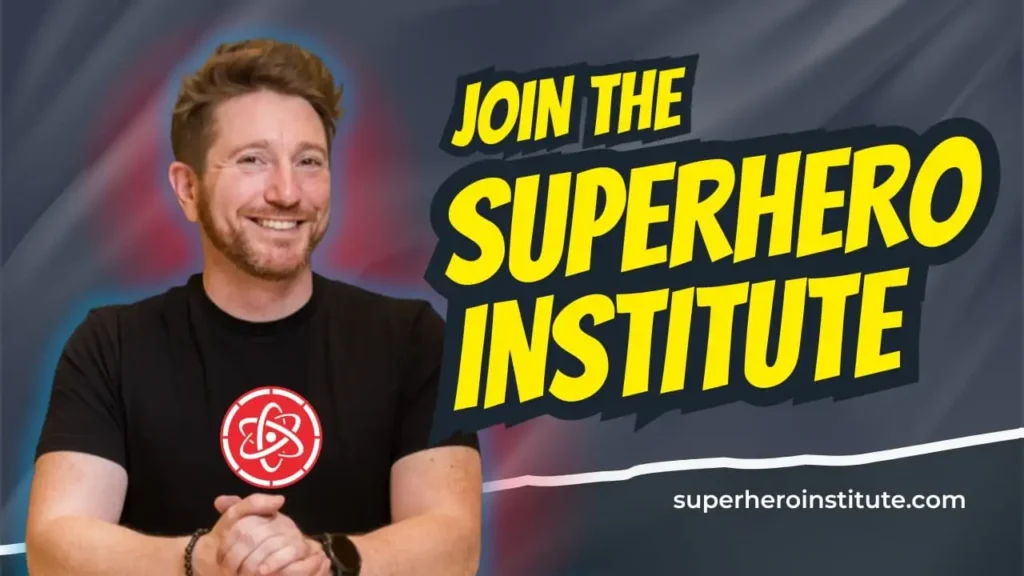Everyday Superpowers: How to Overcome Fear and Move Forward
Whether it is a conversation you’d rather not have, a project you’re dreading and putting off, or even something you want to do but can’t escape the worries in your mind, the cost of inaction can be high.
Unaddressed problems have a habit of getting worse, and succumbing to fear instead of doing something you really want to, is a recipe for a long list of regrets.
If you get stuck in your head, struggle to get unstuck, and want to learn how to break free, perhaps a simple reframe is all you need.
Today, let’s go through three different techniques you can use to move yourself out of your head and into the game.
✉️ Get the Infinite Impact
Join thousands getting weekly wisdom on unlocking hidden potential, building meta-abilities, and creating meaningful change through practical frameworks you can use immediately.
Perhaps you’ve tried these solutions
The two most common methods people turn to are:
- Rationalize the situation
- “Just do it”
Whether someone else is trying to be helpful, or you’re trying to put yourself through either of these methods, you’ll find that neither work particularly well.
Here’s why…
Rationality
When we are stuck, moving forward is generally not a rational matter. The fears and anxiety we experience are emotional. So, no matter how much sense it makes that you should have that uncomfortable talk with your boss, or start that project you don’t want to do, or ask that person to go on a date, chances are you’re still stuck.
Rationality doesn’t address our emotions. In fact, rationality often invalidates our emotions, which doesn’t help it to go away. and may intensify the feelings.
“Just”
Similarly, the suggestion to “just do it” is not helpful. While we can occasionally turn to this simple method, it is not reliable for the same reason that rationality often doesn’t work.
“Just do it” relies on ignoring our emotions in favor of selecting between a simplistic binary of action or inaction.
You can’t ignore your way out of fear
The problem with both approaches is the same:
You cannot ignore your emotions. The key is to confront your emotions by adding context.
So, let’s try some alternative methods.
Technique 1. Go to the bottom

The first technique I would recommend trying is giving into your emotions entirely. Play it out in your head to the most hyperbolic, hypothetical, worst-case scenario.
Take it all the way to the bottom.
What often happens, is you will find that you recognize two things:
- The worst case scenario is very unlikely to happen.
- That even in the worst case scenario, you would be able to bounce back from it.
While this technique does not always work, it often does because it satisfies your emotional need to consider the worst case and to worry with the full force of your mind. In doing so, you allow yourself to emotionally experience the bottom. When you come back up for air to look at the current situation, the next step forward rarely seems as daunting. You will feel more emotionally prepared for the worst case scenario, more aware of the path that leads there, and more confident that you can avoid it getting that bad.
Technique 2: To Hell and Back

The second technique I would recommend trying is taking your current emotion and anchoring it side-by-side with the worst thing you’ve actually been through.
We’ve all had experiences in our lives we’d rather not repeat. Sometimes these are physically painful experiences. Sometimes they are mentally painful experiences. In any of those cases, putting our everyday fears against it engages and contextualizes our current emotions. When you’ve gone through hell and lived to talk about it, everything after that seems a lot easier.
My wife has brought two amazing., beautiful children into this world. She’s gone through labor twice. While she still doesn’t like getting shots at the doctor, compared to childbirth, the shots now seem laughable by comparison.
I had mostly great experiences with hallucinogenic drugs during college. But I also had one really bad trip. While the experience was terrifying, it did comes with a surprising benefit. After that experience, I can honestly say that nothing really seems all that scary anymore. Whenever I get in my own head about something scary, I remember what it was like during that 8-hour ordeal, where I was unable to escape my own mind, and my current fears magically start to melt away.
By using this technique, you’re not invalidating or ignoring your emotions. You are reminding yourself of a time when you actually experienced the same emotion at its most intense. The contrast often helps shrink the current emotional response.
Technique 3: Cold Shower

The third technique is one I’ve written about before but it bears bringing up again.
Cold showers are, in my mind, the most accessible and fast acting of the three techniques. The reason I think it works so well is because it sits comfortably between rationalizing, “just do it,” and technique 2.
The cold shower is a metaphor for anything mildly unpleasant that you have endured in the past. Apart from the recent trend of people doing cold plunge ice baths, people tend to regard a cold shower as something they’d rather not do. It’s also something most of us have experienced, either by stepping into the shower too early, or having the temperature unexpectedly change during the shower.
While generally unpleasant, it’s statistically unlikely that you will die from a cold shower. That is what makes it such a powerful metaphor. Most uncomfortable experiences in life are very similar: uncomfortable but not deadly.
In moments of hesitation, relating to the thing you are avoiding as a cold shower, you are simultaneously rationalizing it (“this won’t kill me”) and shrinking the oversized fear down to a relatable uncomfortable experience.
Once we see it as simply uncomfortable but not deadly, we may find it easier to “just do it.”
It’s Time to Move Forward
There are a lot of scary things happening in the world right now. We have every right to be rationally scared of what will happen to us or our loved ones if things continue moving in the same direction.
In light of everything happening, we cannot afford to be scared of the day-to-day moments. We can’t shy away from tough conversations or from standing up for people being harmed.
I’m calling on all superheroes to move forward, more often. If you have the power to do something impactful, I hope these techniques get you out of your head and into the game.
I hope you enjoyed this post!
If this is your first time here or you haven’t yet become a subscriber… click here to get both Becoming Superhuman and The Infinite Impact Newsletter
If you’re already a subscriber… consider becoming a member to support this work and get all sorts of other benefits.
I hope you enjoyed this post!
If you liked this post, then you will LOVE my newsletter (The Infinite Impact)
and my learning community (The Superhero Institute).


